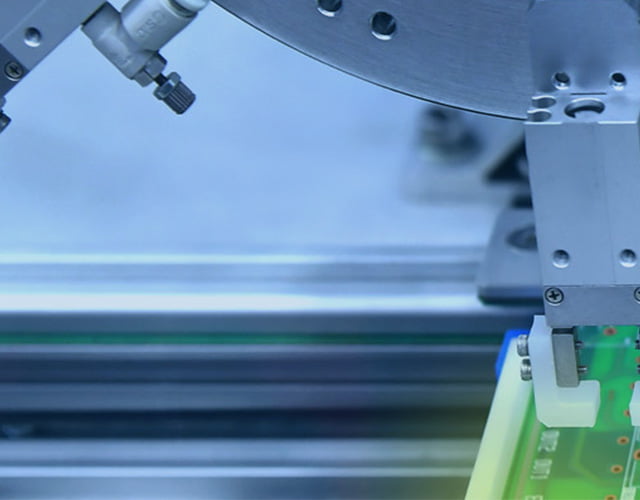U.S. electronics manufacturers' price pressure has slightly eased in August 2022
U.S. Electronics manufacturers' price pressure has slightly eased, and how about the future?
U.S. electronics manufacturers’ growth held constant in August as employment and new orders pushed on and stress reduced, indicating inflation has likely reached its height.
The Institute for Supply Management's monthly index of factory task, the PMI, continued to be level at 52.8 in August. Any number above 50 shows the field is broadening.
Brand-new orders raised by 3.3 percent to 51.3, and also the employment index got to 54.2, up 4.3 percent from July.
In mid-August, the IPC noted similar fads however added that "problems for the electronics supply chain stay tough, with 86 percent of electronics manufacturers experiencing increasing product prices and 76 percent suggesting labor expenses were boosting." Sustaining information from IPC's August Economic Report suggest a slowing economic situation, with a recurring debate amongst specialists regarding the possibility of an economic crisis.

ISM panelists likewise revealed unease about a softening economic climate, with 18 percent of comments keeping in mind issue concerning order book tightening, claimed Tim Fiore, chair of the ISM's manufacturing survey board. Still, ISM's price index declined 7.5 percent to 52.2. "Paired with lead times alleviating, prices need to bring customers back right into the market, boosting brand-new order levels," he said.
Enhanced work needs to help boost production levels, he added, which slipped by 3.1 percent to 50.4 in August. "I believe that's simply labor driven-- manufacturing facilities require workers for a long period." Production was furthermore constrained by provider shipments, supplies, and imports, but to a minimal level than in July.
Companies continued to employ at solid rates in August, with few signs of discharges, employing ices up, or head-count decreases through attrition. Panelists likewise reported reduced rates of quits to the ISM.
The future of electronics manufacturers is still uncertain
August saw crucial enhancements in the inventory-related variables the IPC tracks. Stock readily available to customers rose to 102, the very first time it has actually been above the base degree of 100 given that March 2021. Stock readily available from vendors additionally enhanced, up 9 percent to 94. IPC's outlook requires continuous improvement in both locations.
The electronics field expanded moderately in August, stated the ISM.
At the electronics OEM level, however, there are problems that component-level supply is building. "Demand from customers is still solid, however a lot of that is because there is still anxiety of not obtaining item because of constraints. They are stockpiling," a tech executive informed the ISM. "There will certainly be a projection in the marketplace when the music stops, as well as every person's supplies are bloated."
Chip companies have actually downsized sales expectations for the rest of the year as well as both fabs as well as chip makers have actually reported order terminations in the past few months. That hasn't flowed to the network where representatives report few cancellations as well as demand still overtakes supply.
When it comes to the chip lack? "It depends on who you ask," said Fiore. Gartner is anticipating a surplus in some component classifications very early next year. Nevertheless, OEMs have recently claimed that semiconductor restrictions proceed. The semiconductor product sector is so wide that both scenarios may be true.
Analog Devices, Taiwan Semiconductor, Renesas, as well as TSMC have reported order terminations or high levels of inventory in the past couple of months noted SeekingAlpha. More cancellations are expected by the end of September. "As lead times remain to decrease, a chip shortage might end up being a chip glut," according to investment company Citi. While chip business seldom discuss excess stock, customers do, Citi included.
With element lead times going beyond 50 weeks, clients have placed orders to be first in line when materials chill out. Terminations suggest chips will certainly be readily available to wait for customers earlier instead of later-- a positive development for several OEMs. Yet if excess stock begins flowing, chip costs will decrease, harming chip manufacturers.
It remains uncertain whether OEM electronics manufacturers have actually stockpiled a substantial amount of chips.

" The impact of the chip scarcity is slowing down, and the lowering COVID-19 resurgence in Asia is now impacting production greater than chips," a transport devices manager informed the ISM.
In General
Sentiment stayed optimistic regarding demand, the ISM reported, with panelists giving five favorable remarks for every single cautionary note. Twelve percent of panelists' remarks show expanding worries about complete supply chain supply.
Demand increased, with the new orders increasing, consumers' stocks staying reduced as well as order stockpiles boosted.
Intake (determined by the manufacturing and also employment indexes) boosted throughout the duration. The work index went back to growth after three months of contraction. With the gains in working with and also less vendor distribution issues, manufacturing expansion must boost in September, stated Fiore.






